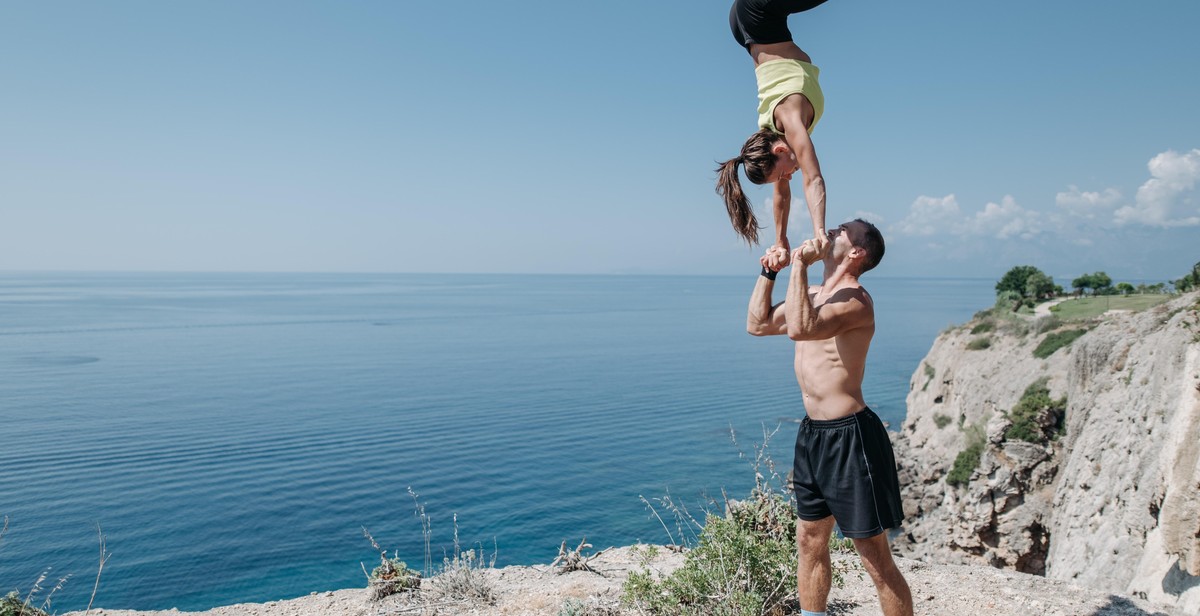How to Train for Parachute Jumping: Fitness and Conditioning Exercises for Skydivers
Skydiving is an exhilarating adventure sport that requires a high level of physical fitness and mental preparation. As a professional article writer and content creator with years of personal experience in the field, I have witnessed the importance of proper training for parachute jumping. Training for skydiving involves a combination of physical and mental preparation, including fitness and conditioning exercises that improve strength, endurance, flexibility, and balance.
The Importance of Fitness and Conditioning Exercises for Skydivers
Parachute jumping requires a high level of physical fitness and conditioning due to the demands of the sport. Skydivers need to have a strong core, upper body, and leg muscles to control their body position in the air and during landing. They also need to have good cardiovascular endurance to handle the physical demands of the sport. Additionally, flexibility and balance are crucial for skydivers as they need to maintain stability during freefall and landing.
Types of Fitness and Conditioning Exercises for Skydivers
There are various types of fitness and conditioning exercises that skydivers can incorporate into their training regimen. These include strength training exercises such as squats, lunges, push-ups, and pull-ups, as well as cardiovascular exercises such as running, cycling, and swimming. Flexibility and balance exercises such as yoga and Pilates can also help skydivers improve their body control and stability.
Additionally, skydivers should also focus on mental preparation techniques such as visualization, meditation, and breathing exercises to improve their focus and concentration during the jump.
Understanding the Importance of Fitness and Conditioning for Skydiving
Skydiving is an extreme sport that requires a significant amount of physical and mental strength. It involves jumping from an aircraft at a high altitude and freefalling through the air before deploying a parachute. To ensure safety and optimize performance, skydivers must possess a high level of fitness and conditioning.
Physical Demands of Skydiving
Skydiving involves a combination of freefalling and canopy control. Freefalling requires a strong core, back, and leg muscles to maintain proper body position, stability, and balance. Canopy control requires upper body strength and endurance to steer the parachute, especially in windy conditions. Skydivers need to be able to withstand the physical demands of both aspects of the sport.
Benefits of Fitness and Conditioning for Skydiving
- Reduced risk of injury: Adequate fitness and conditioning can help prevent injuries such as strains, sprains, and fractures during the landing or when deploying the parachute.
- Improved performance: Skydivers who are physically fit and conditioned can perform better in the air and control the parachute with more precision and accuracy.
- Increased confidence: Knowing that you are physically prepared for skydiving can boost your confidence and reduce anxiety, allowing you to enjoy the experience to the fullest.
- Quicker recovery: In the event of an injury, being fit and conditioned can speed up the recovery process and reduce the risk of complications.
Training for Skydiving
To prepare for skydiving, it is essential to engage in a regular fitness and conditioning program. This should include a combination of cardiovascular exercises, strength training, and flexibility exercises. Some specific exercises that can be beneficial for skydivers include:
- Squats, lunges, and leg presses to strengthen leg muscles
- Planks, sit-ups, and back extensions to strengthen core muscles
- Push-ups, pull-ups, and dumbbell exercises to strengthen upper body muscles
- Stretching exercises such as yoga to improve flexibility and reduce the risk of injury
In addition to regular exercise, skydivers should also maintain a healthy diet and stay hydrated to optimize their physical performance.
| Benefits of Fitness and Conditioning | Training Exercises for Skydivers |
|---|---|
| Reduced risk of injury | Squats, lunges, leg presses, planks, sit-ups, back extensions, push-ups, pull-ups, dumbbell exercises, yoga |
| Improved performance | Squats, lunges, leg presses, planks, sit-ups, back extensions, push-ups, pull-ups, dumbbell exercises, yoga |
| Increased confidence | Squats, lunges, leg presses, planks, sit-ups, back extensions, push-ups, pull-ups, dumbbell exercises, yoga |
| Quicker recovery | Squats, lunges, leg presses, planks, sit-ups, back extensions, push-ups, pull-ups, dumbbell exercises, yoga |

Fitness and Conditioning Exercises for Skydivers
Skydiving requires a high level of physical fitness and conditioning. It is essential to train your body to handle the physical demands of jumping out of an airplane and free-falling through the air. Incorporating a variety of cardiovascular, strength training, flexibility, and plyometric exercises into your fitness routine can help prepare your body for the unique challenges of skydiving.
Cardiovascular Exercises
Cardiovascular exercises are essential for skydivers as they help improve endurance, stamina, and overall cardiovascular health. Running, cycling, and swimming are great options for cardio workouts. Aim to do at least 30 minutes of moderate to high-intensity cardio exercises three to four times a week. Additionally, consider incorporating high-intensity interval training (HIIT) workouts into your routine to improve your body’s ability to handle sudden bursts of energy.
Strength Training Exercises
Strength training exercises are crucial for building muscle mass, increasing bone density, and improving overall physical strength. Focus on exercises that target the core, upper body, and lower body muscles. Squats, lunges, push-ups, pull-ups, and planks are excellent strength training exercises for skydivers. Aim to do strength training exercises two to three times a week, allowing for adequate recovery time between workouts.
Flexibility Exercises
Flexibility exercises are essential for improving range of motion, preventing injury, and promoting muscle recovery. Incorporate stretching exercises into your fitness routine to help improve flexibility. Yoga, Pilates, and static stretching are excellent options for improving flexibility. Aim to do at least 10-15 minutes of stretching exercises after each workout session. Additionally, consider incorporating foam rolling and massage therapy into your routine to help promote muscle recovery and prevent injury.
Plyometric Exercises
Plyometric exercises are high-intensity exercises that involve explosive movements, such as jumping and bounding. Plyometric exercises help improve power, speed, and overall athletic performance. Box jumps, jump squats, and lateral bounds are excellent plyometric exercises for skydivers. Aim to do plyometric exercises one to two times a week, allowing for adequate recovery time between workouts.
| Exercise Type | Frequency | Duration |
|---|---|---|
| Cardiovascular | 3-4 times a week | 30 minutes per session |
| Strength Training | 2-3 times a week | 45-60 minutes per session |
| Flexibility | After each workout session | 10-15 minutes per session |
| Plyometric | 1-2 times a week | 30-45 minutes per session |
Remember to always listen to your body and consult with a healthcare professional before beginning any new fitness routine. Incorporating a variety of cardiovascular, strength training, flexibility, and plyometric exercises into your fitness routine can help prepare your body for the unique challenges of skydiving.

Nutrition for Skydivers
Skydiving is a high-intensity sport that requires a lot of energy and physical exertion. Proper nutrition is crucial for skydivers to perform at their best and stay safe during their jumps.
Importance of Nutrition for Skydivers
Skydiving requires a lot of physical and mental stamina. Proper nutrition is essential for skydivers to maintain their energy levels and focus during their jumps. A well-balanced diet can also help prevent injuries and aid in recovery after a jump.
Skydivers need to consume enough calories to fuel their bodies during a jump. They should also aim to eat a variety of nutrient-dense foods, including lean proteins, complex carbohydrates, healthy fats, and plenty of fruits and vegetables.
Nutrition Tips for Skydivers
Here are some nutrition tips that can help skydivers perform at their best:
- Hydrate: Drinking enough water is essential for skydivers to stay hydrated and maintain their energy levels. They should aim to drink at least 8-10 glasses of water per day, and more if they are jumping in hot or humid conditions.
- Eat a Balanced Diet: Skydivers should aim to eat a well-balanced diet that includes lean proteins, complex carbohydrates, healthy fats, and plenty of fruits and vegetables. They should also avoid processed foods and sugary drinks, which can cause energy crashes and dehydration.
- Fuel Up Before a Jump: Skydivers should eat a meal or snack that provides enough energy to sustain them during their jump. They should aim to eat a combination of carbohydrates and protein, such as a turkey sandwich on whole-grain bread or a smoothie with Greek yogurt and fruit.
- Recover with Protein: After a jump, skydivers should consume protein to aid in muscle recovery and repair. They can eat foods such as grilled chicken, fish, tofu, or a protein shake.
- Avoid Alcohol: Skydivers should avoid drinking alcohol before a jump, as it can impair their judgment and reaction time.
By following these nutrition tips, skydivers can fuel their bodies properly and perform at their best, while reducing the risk of injury or fatigue.
| Nutrient | Source |
|---|---|
| Protein | Chicken, fish, tofu, Greek yogurt |
| Carbohydrates | Whole-grain bread, fruits, vegetables |
| Healthy Fats | Avocado, nuts, olive oil |
Conclusion
Training for parachute jumping requires a combination of physical and mental preparation. Skydiving is a thrilling and exciting sport, but it can also be dangerous if proper precautions are not taken. By following the fitness and conditioning exercises outlined in this article, you can build the strength, endurance, and agility needed to safely participate in this extreme activity.
Remember to always consult with a qualified instructor or trainer before attempting any new exercise program. It is also important to maintain a healthy diet and get enough rest to support your body’s recovery and growth.
Whether you are a seasoned skydiver or a beginner, training is essential to ensure a safe and enjoyable experience. Incorporating exercises like cardio, strength training, and flexibility work into your routine can help you develop the necessary skills and confidence to successfully execute a parachute jump.
With the right mindset, dedication, and hard work, you can achieve your skydiving goals and experience the thrill of freefalling through the sky. So, start training today and get ready to take the leap!
